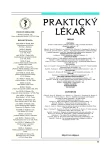Diabetická noha a hyperbarická oxygenoterapie
The diabetic foot and hyperbaric oxygen therapy
Hyperbaric oxygen therapy is an important aid in the treatment of “problematic wounds” which are under a chronic oxygen deficit, and in which the local oxygen tension is below the optimum necessary for healing the defect.
The author presents the principles of hyperbaric oxygen (HBO) therapy in the treatment of defects and gangrene in diabetic foot. She explains the effect – mechanism of the method, the positive capacity of 100% oxygen under overpressure based not only on hyperoxygenation. Presented is also a review of important factors influencing the healing of diabetic foot ulcerations. Pointed out are the conditions that participate in the success of therapy in this affection, the necessity of complex treatment, and the significant share of HBO therapy in successful treatment. Likewise, undoubted is the importance of transcutaneous assessment of oxygen (TCpO2) at site of defect and the increase of its value in the course of exposure to HBO.
TCpO2 values can be applied not only in the determination of the amputation line at times of necessity of such a surgical intervention, but also in the selection of patients for HBO therapy. In diabetic patients with a chronic defect in the leg, TCpO2 should, in the vicinity of the defect, reach about 30 mm Hg in normobaric ambient air; in normobaric 100% oxygen that should be around 50 mm Hg; and 400 mm Hg in an absolute pressure of 2.5 atmospheres in the hyperbaric chamber – so that there be a high probability for the defect to be healed.
The presentation is documented by a number of renouned studies conducted by recognized institutions abroad. There is also presented a review of the types of hyperbaric chambers and the most frequent reasons of unsuccessful treatment due to extraneous causes.
Key words:
hyperbaric oxygen therapy (HBO) – diabetic foot – transcutaneous assessment of oxygen (TCpO2).
Autoři:
J. Zapletalová
Působiště autorů:
IV. interní klinika VFN a 1. LF UK, Praha
přednosta doc. MUDr. A. Žák, DrSc.
Vyšlo v časopise:
Prakt. Lék. 2005; 85(2): 97-101
Kategorie:
Terapie
Souhrn
Hyperbarická oxygenoterapie je důležitým pomocníkem v léčbě „problémových ran“, které jsou v chronickém kyslíkovém deficitu a u kterých je lokální tenze kyslíku pod optimální hranicí nezbytnou pro zhojení defektu.
Autorka prezentuje princip metody hyperbarické oxygenoterapie (HBO) při léčbě defektů a gangrén u diabetické nohy. Vysvětluje efekt – „mechanismus účinku“ této metody, pozitivní schopnosti 100% kyslíku v přetlaku, které nespočívají jen v hyperoxygenaci. Uvádí rovněž přehled významných faktorů, které hojení ulcerací diabetické nohy ovlivňují. Zdůrazňuje podmínky, které se na úspěšnosti léčby u tohoto onemocnění podílejí, nezbytnost komplexní léčby a významný podíl hyperbarické oxygenoterapie na úspěšnosti léčby. Rovněž nepochybný význam transkutánního měření kyslíku (TCpO2) v místě defektu a vzestup jeho hodnot v průběhu expozice HBO.
Hodnoty TCpO2 mohou být použity k určení linie – výše amputace při někdy nutném zákroku, též k výběru pacientů k léčbě HBO. U diabetických pacientů s chronickým defektem nohy by TCpO2 v blízkosti defektu měla dosahovat v normobarickém vzduchu kolem 30 mm Hg, v normobarickém 100% kyslíku kolem 50 mm Hg a přes 400 mm Hg v absolutním tlaku 2,5 ATA v hyperbarické komoře – aby zhojení defektu mělo vysokou pravděpodobnost.
Prezentace je podložena řadou renomovaných studií z uznávaných zahraničních pracovišť. V práci je uveden rovněž přehled typů barokomor a nejčastější důvody neúspěchu léčby ze zevních příčin.
Klíčová slova:
hyperbarická oxygenoterapie (HBO) – diabetická noha – transkutánní měření kyslíku (TCpO2)
Štítky
Praktické lékařství pro děti a dorost Praktické lékařství pro dospěléČlánek vyšel v časopise
Praktický lékař

2005 Číslo 2
- Není statin jako statin aneb praktický přehled rozdílů jednotlivých molekul
- Metamizol jako analgetikum první volby: kdy, pro koho, jak a proč?
- MINISERIÁL: Když ženám stoupá tlak...
- Horní limit denní dávky vitaminu D: Jaké množství je ještě bezpečné?
- Specifika v komunikaci s pacienty s ránou – laická doporučení
Nejčtenější v tomto čísle
- Brachyspiry – původci intestinální spirochetózy
- Diabetická noha a hyperbarická oxygenoterapie
- Liečba a diagnostika traumatických lézií brachiálneho plexu
- Vrozené anomálie koronárních tepen: tři kazuistiky
